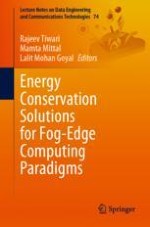This book focuses on energy efficiency concerns in fog–edge computing and the requirements related to Industry 4.0 and next-generation networks like 5G and 6G. This book guides the research community about practical approaches, methodological, and moral questions in any nations’ journey to conserve energy in fog–edge computing environments. It discusses a detailed approach required to conserve energy and comparative case studies with respect to various performance evaluation metrics, such as energy conservation, resource allocation strategies, task allocation strategies, VM migration, and load-sharing strategies with state-of-the-art approaches, with fog and edge networks.
